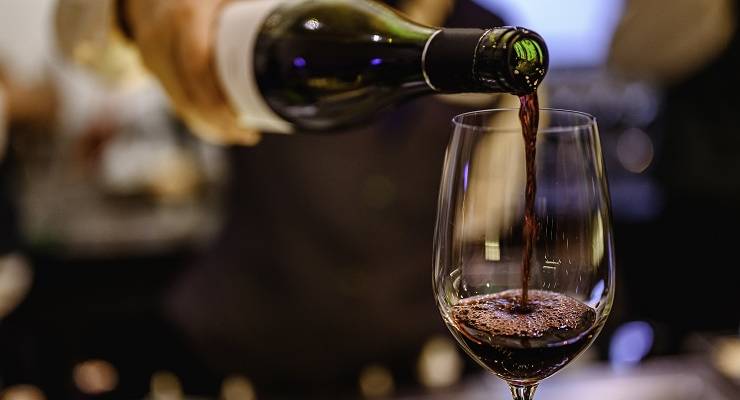
Never buy the second-cheapest wine on the menu.
I’ve heard this many times and thought it was just a fun rule of thumb. But two British economists decided the theory was worth testing, and did so with audacious precision. Their results came out last month.
“Restaurateurs are believed to overprice the second-cheapest wine to exploit naïve diners embarrassed to choose the cheapest option,” write David de Meza from the London School of Economics and Vikram Pathania from the University of Sussex in a working paper titled: “Is the Second-Cheapest Wine a Rip-Off? Economics vs Psychology in Product-Line Pricing”.
These blokes weren’t mucking around. The two oenophile economists collected a staggering amount of data, covering 6335 wines on 235 London wine lists, ranging in price from £8.5 (A$16) to £7630. (This info was collected electronically, by the way, not via an increasingly dissolute series of dinners billed back to the econ department!)
They ran the data through a series of robust regressions, and at the end they had to conclude the old saw is not so sharp any more.
“We find that the mark-up on the second cheapest wine is significantly below that on the four next more expensive wines,” they wrote. “It is an urban myth that the second-cheapest wine is an especially bad buy.”
So feel free to buy that second-cheapest wine — it’s good value. In fact, feel free to buy the cheapest one. It has both the lowest percentage mark-up and the lowest mark-up in currency terms.
“Mark-ups are low at the bottom to encourage wine consumption of some sort,” de Meza and Pathania wrote. This reveals an important point: someone might nurse one glass of wine throughout a whole evening if wine prices are high, or even — gasp! — drink water.
Mid-range trap
“Percentage mark-ups are highest on mid-range wines,” they wrote. The middle of the wine list is the new trap for young players.
Around the median wine, mark-ups soar to over 300% over retail price. (For those playing at home: 100% mark-up is a doubling; 200% is a tripling; 300% means four times retail price.)
The top of the wine list has smallish percentage mark-ups, lower even than those on the cheapest wines. But in dollar terms, the mark-ups at the top of the wine list are enormous. At the furthest end of the wine list, at the sort of restaurant that has a lot of wines listed, the house could make £150 profit (A$275) on one bottle.
Is this useful information for Australians? Not if you’re in Melbourne where the restaurants are closed at the moment, but for many Australians, yes, as wine is their tipple of choice.
Australians drank 28 litres of wine each in 2018, the most recent year for which the ABS provides data — down just slightly from the record level in 2009-10.
While our wine consumption is slowly falling, wine is actually increasing its market share because beer and spirits consumption are falling faster. Australians get as much alcohol from wine as from beer. Per-capita beer consumption has halved since 1968, the ABS reports.
By the glass?
De Meza and Pathania also did some simple volumetric analysis and found that buying wine by the glass does not come with a big price whack compared with buying by the bottle — just a 6% to 13% premium. It’s useful research, and it also looks like fun — which immediately makes me suspicious.
The working paper is circulated by something called the American Association of Wine Economists. A quick Google reveals that that is exactly what it sounds like: an excuse to go to a conference in a beautiful part of the world each year. Their next one — postponed from 2020 — is in the Italian city of Verona. Charming!
It’s all a game
Finding the cheapest wine on a wine list is a game in the way economists define it: a strategic interaction. As we come to understand where the cheapest, best-value wines should be, the crafty sommeliers and proprietors will change the position of those wines. The wine list is never in stable equilibrium.
I went back in time to try to find what the historical consensus was on the second-cheapest wine. In 1974 it was considered wise to buy the second-cheapest wine, espoused by famous US wine columnist Michael Pakenham in his column “On Wine”.
But perhaps his fame made the advice too popular, because just three years later the strategy was “according to wine aficionados … wrong”, according to a columnist named Barbara Beck. Which is exactly what you’d expect if proprietors were reacting to the public becoming aware the second-cheapest wine was good value.
By 1990 the status of the second-cheapest wine had descended further, becoming a punchline in an episode of The Simpsons as Homer calls to the waiter: “Garçon! Another bottle of your second-least-expensive Champagne!” This YouTube classic from 2010 also gets good laughs from the trope.
But now the cycle is complete, and the second-cheapest wine is again an acceptable, good-value choice.
The location of the best-value bottle in the wine list is a dance that never stops. The proprietor is trying to mark up the wines she thinks you will order, and you are (at least sometimes) trying to order wines with the least mark-up.
Right now, the best-value wines are at the cheapest and most expensive parts of the wine list. That’s what the research says. They’ll stay there for a while. De Meza and Pathania’s research is still in “working paper” format — i.e. it is very new. But as the new research becomes common knowledge, expect the game to advance and the extremes of the wine list to get more expensive again.
You can only win by staying one step ahead. Or drinking water.
Where do your eyes go on the wine list? Top, middle, or bottom? Let us know by writing to letters@crikey.com.au. Please include your full name to be considered for publication in Crikey’s Your Say section.








Just whip out your phone and find what the same wine costs at Dan Murphy’s.
Just imagine what the wines would report about Britain’s second cheapest economists.
Crikey, you have been conned and that rarely happens.
I thought the best way to pick a wine at a restaurant is to compare the wine list and food list and try to pick what will go well together. That, or get riesling because that’s very hard to go wrong with since it pairs with pretty much anything.
The best value wines are the least fashionable which are also more often purchased by older consumers. Australian Riesling and Semillon are the best value whites. Cabernet and cabernet blends at mid-price point are often the best value. Grapes grown in a warmer climate are generally better value than cooler climates because of the cost of the land. Long established producers are nearly always better value because they have not factored the cost of borrowings into their price structure. Producers who crush 400 tonnes pa are better value because of economies of scale.
I reckon the best value for money Australian wine is Tscharke from the Barossa Valley. https://www.tscharke.com.au/
As for wines by the glass, just ensure you choose something which requires the restaurant to open a new bottle! or if you prefer not to ask just choose the most trendy.
Gage Rossiter
ps Mark up means a multiplication of the wholesale price not the retail price.
There is not a sober sentence in this article. That includes this one:
“Finding the cheapest wine on a wine list is a game in the way economists define it: a strategic interaction.”
These “researchers” have merely collected wine lists and run them through “robust regressions”. Their unstated assumption seems to be that the “cheapest” wine on a list is that with the lowest markup over a wholesale price.
The methodology is so laughable it is not slightly amusing.
There is nothing to be learned from this article about wine, research, value nor journalism and what we learn about economists is fortunately not generally applicable.
I agree with you that there was nothing to be learned
I think i will go and open an unfashionable bottle
“As for wines by the glass, just ensure you choose something which requires the restaurant to open a new bottle!”
I don’t think this is always the case, especially with some reds. I’m betting not a lot of decanting goes oon otherwise, so it’s a way of letting the wine breathe.
It’s not so much of a problem if the wine is kept in the fridge – which, with reds, rarely seems to happen much south of Darwin.